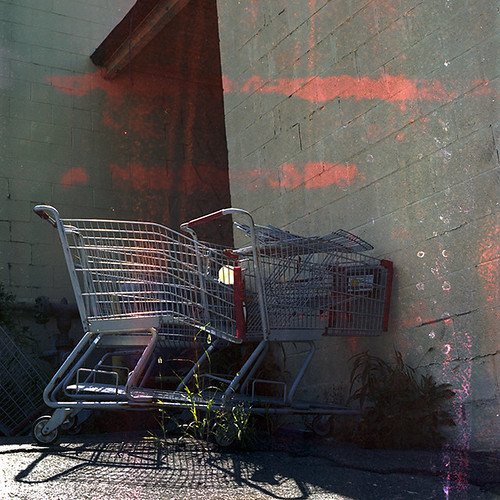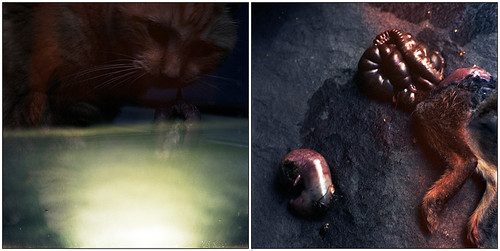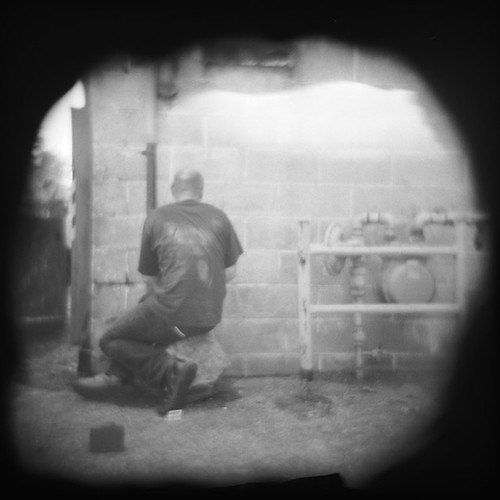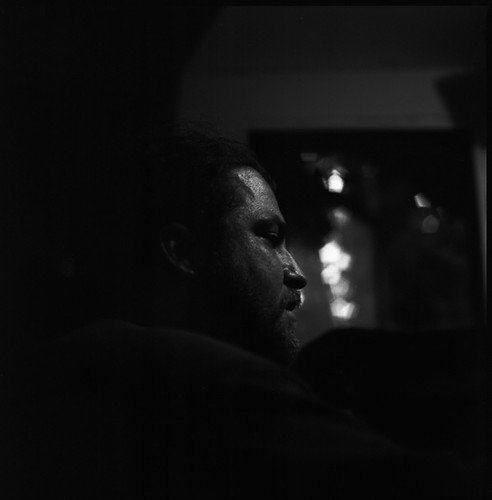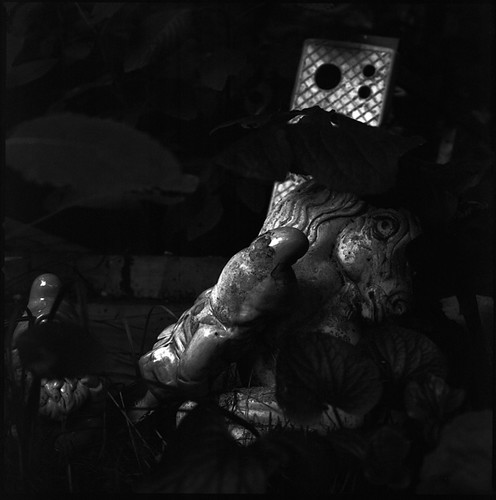NameMedia bought photography community site photo.net. Read about it.
Month: October 2007
Heat-damaged film examples
Heat fogs film and creates other "interestingness", which is why most people store it in the fridge or freezer (but don’t freeze Polaroid!). It’s impossible to predict exactly what will happen to any given roll of film, so don’t mistake this as a "this is what you’ll get if you take this emulsion and expose it to this amount of heat" reference. It’s different every time, this is just meant to show some of the different effects I’ve run into. Most of these are from a bag of rolls I left in a hot car in summer: same conditions, many of the same emulsion even, different results.
Kodak Portra 400UC 120 in a Holga left out in hot summer sun for about an hour, after which the camera was hot to the touch. This is the frame that was advanced, ready to be shot, and therefore got the most heat exposure. Curiously, the rest of the roll seemed unaffected.
The distinct red spots are from the heat and the vertical line of white spots is chemical residue from crappy processing. From here on out, the film was left in a hot car, not sure for how long.
Less-defined red areas. Kodak Portra 400VC, 120.
Mottling. Kodak Portra 400UC, 135.
Blue edge. Kodak Portra 400VC, 120.
Rusty swath. Kodak Portra 400VC, 120.
Rusty swath and mottling. Kodak Portra 400VC, 120.
More examples in the Heat-Damaged Film group on Flickr.
Tin-foil-lined Holga
Ever wonder what happens when you line a Holga with aluminum foil? Me too!
I crinkled the crap out of it to hopefully get lots of light bouncing around in different directions, and lined the camera, shiny side out. The irregular vignette is because I wasn’t very careful about leaving the edges of the light path clear.
I expected the lowered contrast, but was thinking I might get some random specular-type highlights. Nope. Of the whole roll, this is the only frame that had a visible artifact (the white wavy form near the top). But this does show that you can easily control the shape of your vignette, just take the back off and put some crap around the square hole you can see the shutter through.
If you care, this is Kodak T-Max 100 developed in Diafine.
Learning from "significant failures"
Mike Johnston of The Online Photographer just posted a characteristically insightful piece on becoming a "successful" photographer. (I put that in quotes because he’s talking about more than one kind of success.)
The real gold is in the last section, How to know. The significant idea is this: "If you use the 1-2-3 method of editing, you might consider starting a new category: significant failures."
Read the rest, it’s short and worth it!
Clever improvised ring light
This only works in low light when you’re shooting near your computer, but if you are, this technique outlined at DIYPhotography.net gets points for bricolage style, cheapness, and ease of use.
Kodak update T-MAX 400 black and white film
You can read the complete press release, but the highlights are:
- It’s the "world’s sharpest" and "finest-grained" ISO 400 B&W film.
- Pushable 2 stops up to ISO 1600.
- Availability "will occur on a stock-turnover basis, beginning in December 2007".
- The new film code will be TMY-2.
There’s a surprisingly informative Q&A sheet (PDF) about the old vs the new film, check it out.
How to fix a Holga’s corner double exposure issue
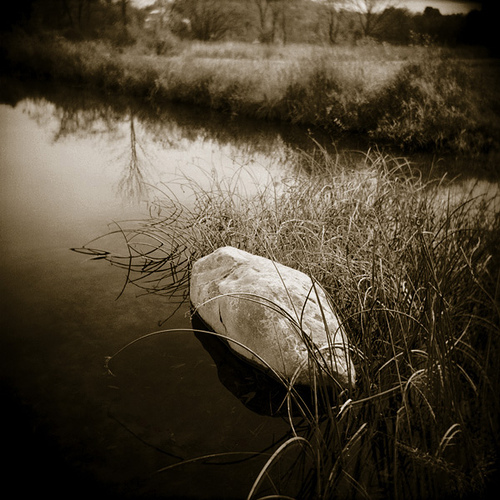
There is a fairly common shutter issue with Holga toy cameras that creates a slight double exposure in the bottom right corner of the frame (see above).
See what causes it and find out how to fix it at Squarefrog’s excellent Holga resource site, Holgas Online.
Bizarre cross procesing technique: film accelleration
Cross processing is developing film in the "wrong" chemistry, for example shooting slide (E6) film and processing it in the chemicals meant for colour negative (C-41) film. This is normally what’s meant when people say cross processing, but it can go in almost any direction. You can also do C-41 film in E6 chemistry, or any film in B&W chemistry. The only thing you can’t do is B&W film in colour chemistry, because the bleach leaves you with a blank roll.
Apparently "film acceleration" is a bit more complicated, and sounds a lot like something called the "Henry Beck process" that the owner of my local lab told me about (and I can find absolutely no information on anywhere). Instead of a simple chem switch, this is: underexpose slide film, pre-soak, soup in B&W developer, wash, fix, wash, bleach, C-41. Yeow! But the results do look unique.
Read the how-to, with sample images, at JPG Magazine.
Flickr member pochedunfou also has a large set of accelerated photos, which serves as an excellent reference of the effect across a number of different emulsions of varying age.
Update: pochedunfou pointed me to the Be Great: Accelerate group for the technique on Flickr. Cool!
"Photographer’s Eye" lecture series, NC, US
The town of Cary, North Carolina [US] is sponsoring their third year of the "Photographer’s Eye" lecture series. The 2007 schedule is:
Roger May, Photojournalism: Telling the Story
Tuesday, 9 October, 2007, 7:30 pm
Cathryn Jirlds, Intimate Landscapes
Tuesday, 16 October, 2007 7:30 pm
Joe Lipka, Getting Past Obvious
Tuesday, 23 October, 2007, 7:30 pm
The lectures are held at Page-Walker Arts & History Center, 119 Ambassador Loop, Cary, NC, US. The series is free to attend and no reservations are required. Be there or be square!

